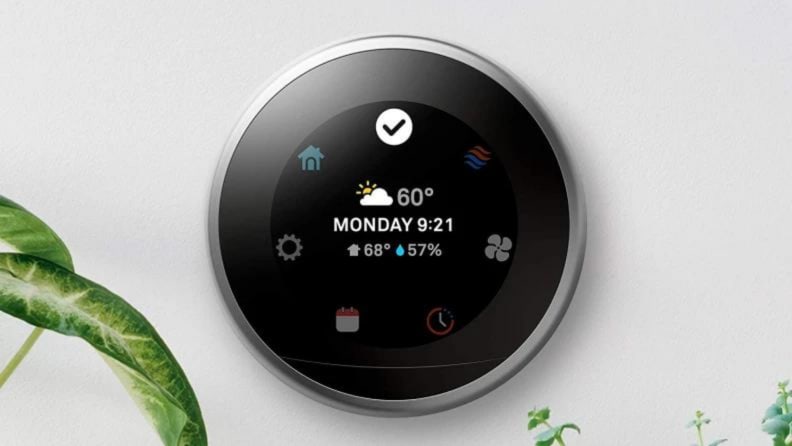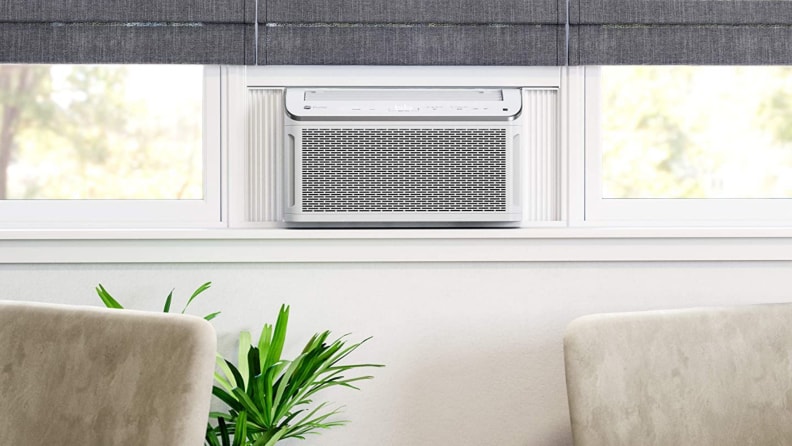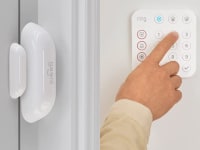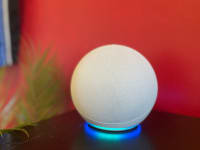Here's how to cool down a room quickly and efficiently
Stay cool when a heatwave rolls through
Products are chosen independently by our editors. Purchases made through our links may earn us a commission.
When the summertime heat creeps in, you’ll want to do anything you can to escape it. If your priority is keeping your home cool, we’re with you.
Cooling down your home quickly is a game of fighting the laws of physics and thermodynamics, explains Mike Lemble of Aeroseal, a duct and air sealing company. Even those with central air conditioning should consider planning for ways to keep out the heat.
Through regular maintenance and strategic planning, you can cool down a room quickly and efficiently. Here’s how.
Block out the light with blackout curtains
Long days with lingering daylight into the evening hours are one of the most delightful parts of summer. However, you want to enjoy that extra light outside of your home. When the summer sun shines through your windows, it really bakes heat into your home.
To keep things cool, look into blackout curtains. During peak sunlight hours, blocking your windows with blackout curtains will keep light out to avoid rising temperatures. Lemble says that keeping the curtains shut can result in your home staying about 20 degrees cooler during the summer months.
We've tested out the best blackout curtains and found that the Amazon Basics Blackout Curtains are a great value.
Open up the doors to let the air flow
While you want to keep heat out, you also want to let it out. Even if you’re doing everything to keep your home cool, you may have some unknowing culprits creating heat in your home that needs to be let out.
Lemble notes that running your oven and stove top creates heat, which prevents your room from cooling down. Other electronics like your TV and Wi-Fi router can also give off heat, creating a hot and stuffy environment. Opening up the doors will let air flow through to clear out the stale air and cool things down.
If you want to increase the airflow with your doors opens, create a cross breeze with box fans. Bring in two box fans, one with the fan pointed outside, and the other with the fan facing into your home. This will help the air circulate more quickly. We like the Hurricane box fan which brings some serious wind power.
Keep air moving with fans
Speaking of fans, they’re a key factor in cooling down your home.
If you have an HVAC system that puts air conditioning on a timer so it’s running when you’re home but not wasting power when you’re not, consider leaving the fan on at all times. Lemble says keeping the fan on will keep air circulating to help regulate the temperature without needing A/C to be on all the time.
Lemble estimates it will cost the average homeowner between $1 to $2 daily to constantly run your HVAC fans. It’s up to you to decide if the increased cost is worth it when it comes to quickly cooling your home.
Got ceiling fan? Check those, too. In the winter, set the fan so that it spins clockwise. This motion lifts up warm air and circulates it around the room. In the summer, change the direction of your fan to spin counterclockwise to create a cool breeze.
Most ceiling fans have a switch that changes the direction of the blades. And some ceiling fans like the Honeywell 50614-01 have a remote to control its settings.
Check in on the brainpower behind your HVAC system

Did you know that the Google Nest allows you to control the unit with a physical remote or smart phone through the Nest app?
While you may have revamped your HVAC system, did you keep the old thermostat that came with the house? If so, Lemble says it might not be up to par.
“[The thermostat is] the brain to the HVAC system's heart, and the ducts are the lungs. I the thermostat isn't operating properly, your HVAC system can't work correctly,” says Lemble.
Upgrading to a smart thermostat will not only level up your home’s technology but it will also increase your HVAC system’s efficiency.
The Nest Learning Thermostat (third-gen) is one of the best because it can learn your temperature preferences and create schedules based on your habits, fully automating your hot and cold airflow. Some smart thermostats like Nest's can alert you to problems within the system, so you can remedy the issue before HVAC goes kaput, and have geofencing technology, which automatically adjusts the thermostat to your desired preferences based on your location.
Once you know your thermostat is working, keep it set at a steady temperature throughout the day.
Perform regular maintenance
When a heatwave kicks in, you don’t want to be scrambling to keep it cool.
Whether you have a window, portable, or central air conditioning, you should clean the filter every one to two months. Lemble says that when filters get caked with dirt it decreases their effectiveness, which will make cooling your home go slowly. (You may need to clean your filter more frequently if you have pets in the home or have allergies.)
For those with central air conditioning, clean your condenser unit that sits outside the home. Lemble explains that your air conditioner condenser pulls air out of the home to cool it down, but it’s also collecting all of the dust and dirt from your home.
Cleaning your condenser is as easy as rinsing it down with a garden hose. This is definitely a task you can knock out while you’re tending to your garden.
Get your air conditioning running efficiently

The SEER rating system helps you decide whether you're getting the most out of your old air conditioner.
Air ducts with holes and leaks can cause up to 30% of your cold air to escape. In turn, your HVAC system works harder than it should to cool your home.
“These leaks cause uneven temperatures in your home, excessive dust, and even trigger allergies,” says Lemble. If you find you need to crank up the A/C to get a room fully cool, it’s time to check your ducts.
Bringing in a professional to examine your system can ensure that your home’s system is working to its fullest potential.
Take a look at your air conditioner's seasonal energy efficiency rating (SEER), as well, says Lemble. The average rating for most units is 16 but high efficiency models are typically 23. The higher the rating, the more quickly the air conditioner will cool your home. Plus, it can save you money.
If you find that your A/C model has a rating of below 13, it’s time to upgrade to a more efficient system—and you may even be eligible for a tax credit when you do so. Our pick for a top-notch AC unit is the GE Profile which keeps you cool and runs quietly.
The product experts at Reviewed have all your shopping needs covered. Follow Reviewed on Facebook, Twitter, Instagram, TikTok, or Flipboard for the latest deals, product reviews, and more.
Prices were accurate at the time this article was published but may change over time.


